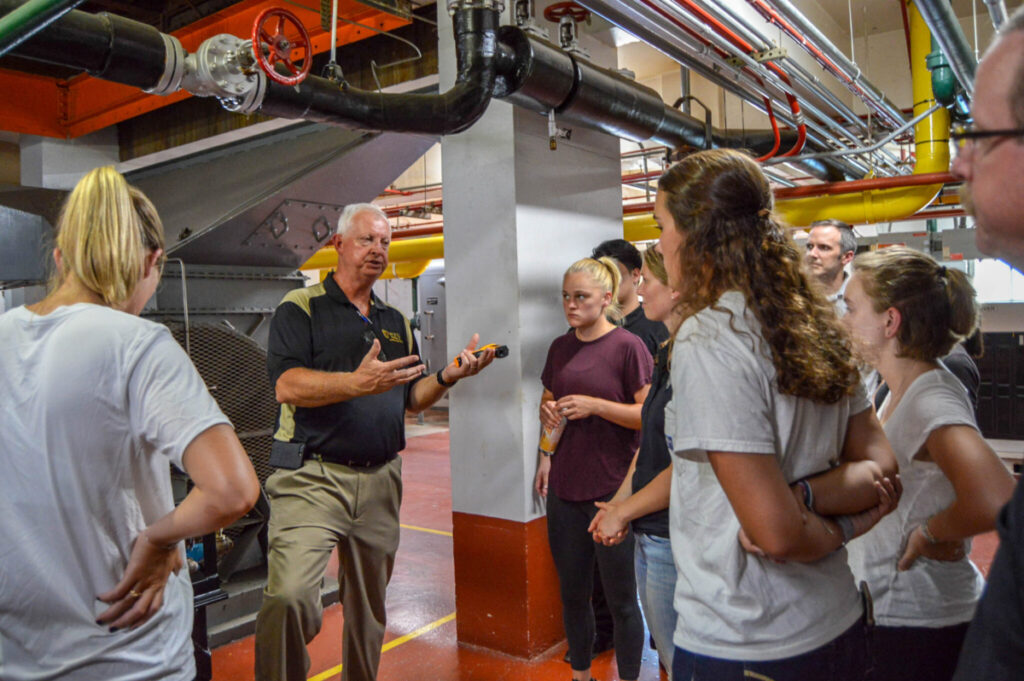We Are Still In: University Commitment to GHG Reduction Grows Despite National Withdrawal from Paris Agreement

By Sophia Masciarelli (’22), Content Development Assistant
In 2015, the Paris Agreement was adopted and signed by 195 nations around the world as part of the United Nations Framework Convention on Climate Change. It signaled a landmark of a new global commitment aimed at limiting greenhouse gas (GHG) emissions by 1.5°C above pre-industrial levels. The goal? To slow and eventually stop the warming of the planet.
As of Wednesday, November 4th, the current presidential administration’s move to withdraw the United States from the Paris Agreement officially took effect.
When the decision to formally withdraw from the climate accords was first announced in 2017, a coalition of over 2,000 businesses, almost 300 cities, 10 states, 12 tribes, and 400+ universities and cultural institutions – including Wake Forest University – signed their own commitment with a clear and unified message: We Are Still In.
“On campus, we are developing a rigorous plan to reduce the greenhouse gas impacts of University operations,” wrote President Nathan O. Hatch in his 2017 We Are Still In statement. “As we move forward in implementing the plan, we will set clear and transparent targets for reducing the total impact of campus operations.”
Wake Forest’s Commitment to Climate Action
At the time that Wake Forest joined We Are Still In as a signatory in 2017, the university had reduced its greenhouse gas impact by over 19% per square foot in campus buildings and had big plans to continue that trend.
“Our 2017 exercise of where can we go in 10 years (or 2027) took us to a gross carbon reduction of 49% from our 2007 baseline and to an energy density reduction (kbtu/sf) of 40%,” says Mike Draughn, Assistant Vice President of Facilities Operations. “These were the numbers that gave us and Sustainability the confidence to push for carbon neutrality by 2040.”
By continuing to utilize advanced scheduling, metering, and analytics, as well as enhanced preventative maintenance on systems, Wake Forest has now been able to reduce total carbon emissions by nearly 42% since its 2007 baseline as of FY20, even as the campus footprint has increased with the addition of new buildings.
“We are working hard to make sure campus comes out stronger,” Draughn says.
In addition to these carbon emission reductions, the campus’s total energy density reduction is projected to be roughly 40% at the end of this year. It is important to point out that some of these projections are due in part to COVID-19’s wide reaching impact, sending students home in March of 2020 and leaving empty campus buildings ripe for energy savings. Draughn regards these reductions as “really exciting” nonetheless.
Efficiency investments like retrofits to lighting, upgrades to on-site utility generation, and the addition of solar thermal heating for domestic hot water have all played an important part in the efficiency gain trajectory at Wake Forest.
“In regard to the Paris Agreement, we never stopped,” says Doug Ecklund, Assistant Director of Building Systems at Wake Forest. “We were always full steam ahead in making reductions.”
In addition to structural and technological improvements, another key piece of drawing down the campus’s carbon footprint has been – and continues to be – human behavior change. Peer-to-peer outreach, building information sessions, and opportunities for classes to tour the university’s heating and cooling plant and building dashboard have all played an important role in educating occupants about the importance of doing their part to work in tandem with the campus’s optimized systems.
Looking Ahead – Changes in the National and Global Sphere
The recent election of the Biden-Harris administration, who have vowed to make rejoining the agreement a top-priority in its first 100 days in office, signals a new era for the United States in the Paris Agreement and international sustainability efforts. Even considering the strides taken at the subnational level, the future of climate action in the international sphere rests on U.S. participation and pushing for further environmental protections and regulations.
Professor Justin Catanoso of the Journalism Department at Wake Forest University explains how Trump’s move to pull the US out brought about a massive leadership vacuum around this agreement and climate change mitigation at large. Catanoso has reported on six climate summits and spent more than 30 years reporting on climate change, healthcare, economic development, and travel.
“The leadership vacuum actually gave rise to a lot of negative leadership, with several countries pushing for greater usage of fossil fuels,” says Catanoso. Most of the international progress that had been made up until this point was completely undermined by the move.
Of the original signatory nations of the climate accords, 189 out of the 195 have gone on to formally ratify the Paris Agreement, which commits governments to meeting the goals of the treaty. But climate experts speculate that even meeting these targets to stop global warming at 1.5℃ are still not aggressive enough when it comes to mitigating the global climate catastrophe.
“If every nation met its targets that it set in 2015, our temperatures would still rise globally by 3 degrees by the end of the century,” says Catanoso.
The US must work to win back the trust of the world community, and the world community must continue to press on if we wish to bend the curve of warming and catch up to our planet before we run out of time.
“As a globe, humans have finally learned to run when it comes to climate change action,” says Professor Justin Catanoso. “But climate change is sprinting.”
